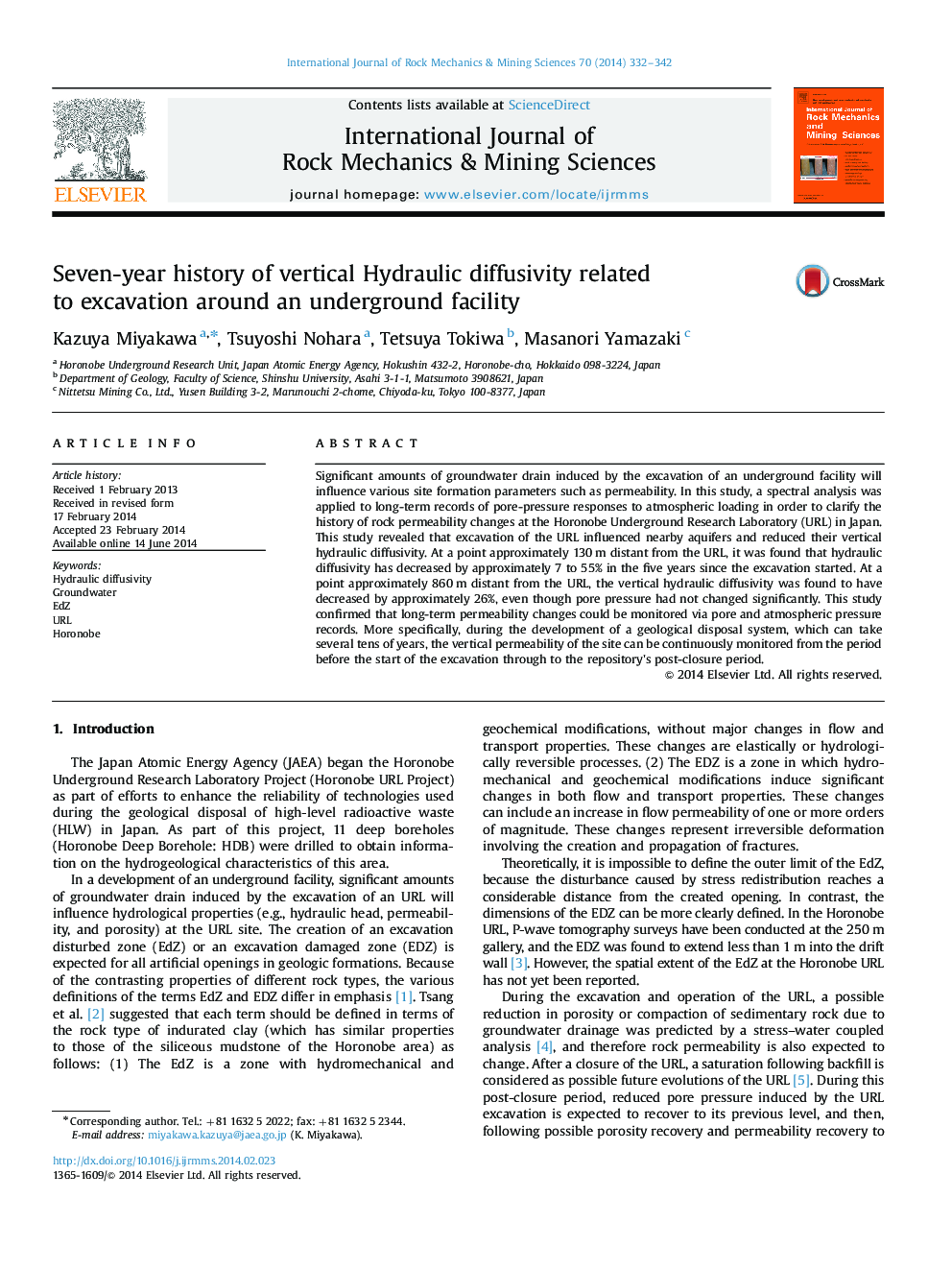| کد مقاله | کد نشریه | سال انتشار | مقاله انگلیسی | نسخه تمام متن |
|---|---|---|---|---|
| 809106 | 1468699 | 2014 | 11 صفحه PDF | دانلود رایگان |
• The excavation of a URL influences the aquifers in the area.
• At a point 130 m from the URL, the vertical hydraulic diffusivity decreased by 58%.
• At a point 860 m from the URL, the vertical hydraulic diffusivity decreased by 25%.
• The decrease is probably related to an increasing groundwater out-flow from the URL.
• The long-term history of the vertical hydraulic diffusivity change can be monitored.
Significant amounts of groundwater drain induced by the excavation of an underground facility will influence various site formation parameters such as permeability. In this study, a spectral analysis was applied to long-term records of pore-pressure responses to atmospheric loading in order to clarify the history of rock permeability changes at the Horonobe Underground Research Laboratory (URL) in Japan. This study revealed that excavation of the URL influenced nearby aquifers and reduced their vertical hydraulic diffusivity. At a point approximately 130 m distant from the URL, it was found that hydraulic diffusivity has decreased by approximately 7 to 55% in the five years since the excavation started. At a point approximately 860 m distant from the URL, the vertical hydraulic diffusivity was found to have decreased by approximately 26%, even though pore pressure had not changed significantly. This study confirmed that long-term permeability changes could be monitored via pore and atmospheric pressure records. More specifically, during the development of a geological disposal system, which can take several tens of years, the vertical permeability of the site can be continuously monitored from the period before the start of the excavation through to the repository׳s post-closure period.
Journal: International Journal of Rock Mechanics and Mining Sciences - Volume 70, September 2014, Pages 332–342
